NIH Dedicates Alzheimer’s Research Facility to Blunt
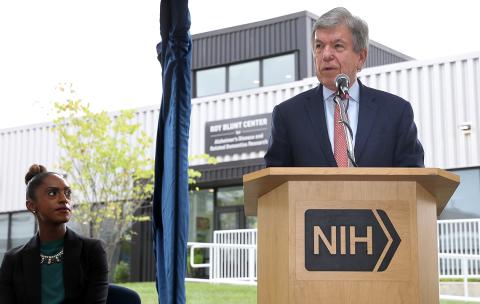
Photo: Chia-Chi Charlie Chang
NIH recently dedicated its new intramural Center for Alzheimer’s and Related Dementias (CARD) research facility to Sen. Roy Blunt (R-MO), a longtime champion of public health research funding.
Many key leaders came together to honor Blunt at the dedication ceremony on Sept. 19, including Rep. Tom Cole (R-OK) and Sen. John Boozman (R-AR).
“I’m so pleased to be associated with NIH,” said Blunt during the ceremony. “I’m particularly pleased to be associated with this critically important building for the future of families and the future of aging and the future of people caring about other people.”
Six million Americans have Alzheimer’s. One American moves into the Alzheimer’s category every 65 seconds; 11 million Americans are caregivers.
By 2050, the cost of Alzheimer’s in the U.S. alone will be $1.1 trillion—equal to today’s entire Department of Defense budget. By then, Blunt said, 2 people will get the disease every 65 seconds “unless the promising work happening right now produces results.”
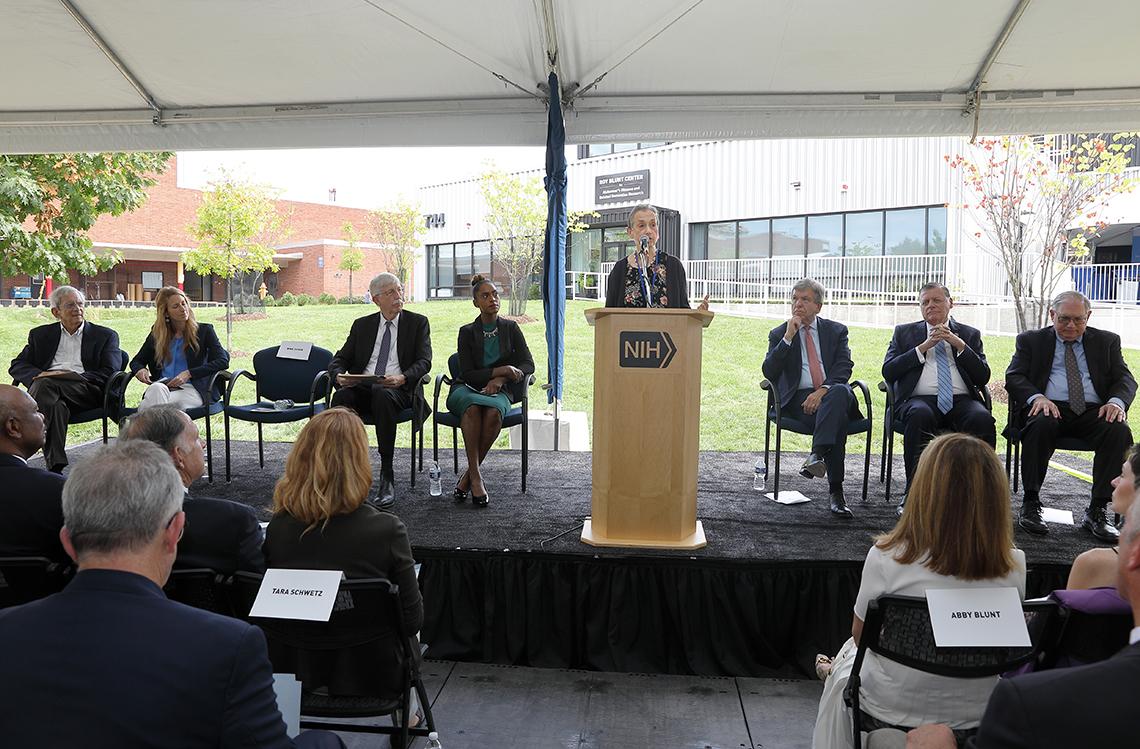
Photo: Chia-Chi Charlie Chang
The first national plan to address Alzheimer’s was created in 2012, said Dr. Lawrence Tabak, performing the duties of NIH director. “Today, we reflect on how far we’ve come thanks to robust and sustained investment from Sen. Blunt and his colleagues in Congress,” he said.
NIH-funded research has led to new discoveries about Alzheimer’s and related dementias. Finding effective treatments “has never appeared more promising,” Tabak said. “Now, we have to leverage the momentum we’ve gained to continue innovation and discovery to push forward to improve diagnosis, prevention and treatments.”

Photo: Chia-Chi Charlie Chang
The 24,000 square foot building will house more than 130 scientists and staff. The center will support basic, preclinical and clinical research. It is made up of 65 individual modular units that were assembled at a factory outside Orlando, Fla., and delivered by truck for assembly in Bethesda.
“Sen. Blunt’s support for NIH and Alzheimer’s research in particular has been instrumental to important progress in making this center possible,” said Tabak. “The naming of this facility recognizes him as an extraordinary leader and pays tribute to his unwavering commitment to speed progress in dementia research and care.”
Developing treatments for Alzheimer’s will require experts from different scientific backgrounds working together, said Dr. Nina Schor, acting NIH deputy director for intramural research.
“The only way we can assemble teams like that is to build centers like the Roy Blunt Center for Alzheimer’s and Related Dementias Research, where people can be invited from every possible discipline, from every vantage point, with every view possible of these disorders,” she said.
In 2020, NIA and NINDS established the center “to fight the growing tidal wave of dementia-related disability,” recounted CARD and NIA staff scientist Dr. Sara Bandrés Ciga.
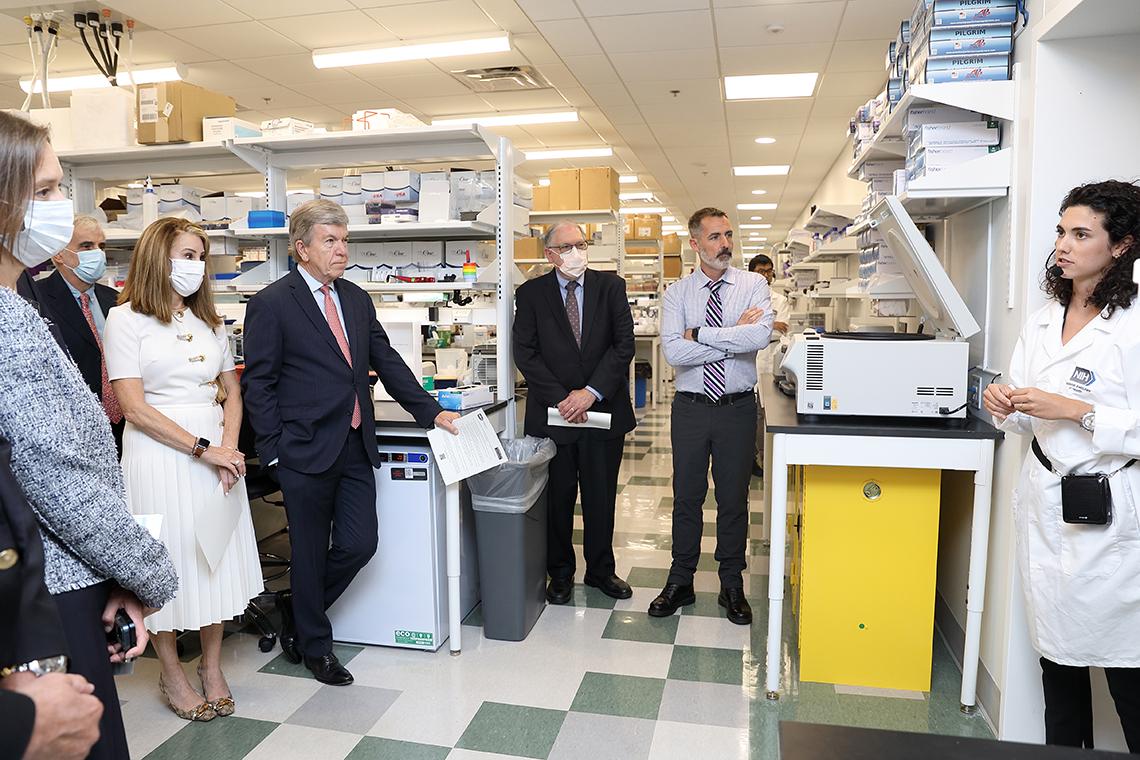
Photo: Chia-Chi Charlie Chang
“The CARD fills gaps that exist across basic science, translational, clinical and data science portfolios of Alzheimer’s and related dementias research,” she said. “We are not here to compete with existing programs. We are here to compliment research through open science, training and collaboration.”
Since 2015, Blunt has been the senior Republican on the Senate appropriations subcommittee on Labor, Health and Human Services, Education, and related agencies, the congressional committee that oversees NIH’s budget. During his tenure, NIH’s funding has increased by nearly 50 percent. Research funding for Alzheimer’s has grown five-fold over the past 7 years.
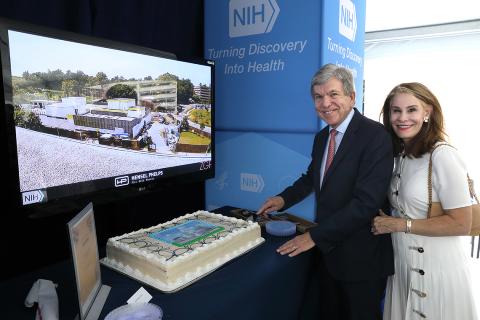
Photo: Chia-Chi Charlie Chang
Former NIH director Dr. Francis Collins first got to know Blunt on a visit to Washington University in St. Louis’s medical campus. There, they saw presentations on the microbiome, cancer and Alzheimer’s. Blunt had insightful discussions with the presenters and met with the younger scientists.
“I knew we had a champion, somebody who was able to ask hard questions and wasn’t going to be a pushover,” said Collins, who is currently President Joe Biden’s acting science advisor. “He immersed himself in the details right away.”
NIH’s budget doubled from 1998 to 2003, thanks to the efforts of Congress. Over the next dozen years, “NIH lost ground.” The purchasing power for medical research declined by more than 20 percent.
Legislators who had previously boosted NIH research, such as late Congressman John Porter and former Sens. Arlen Specter and Tom Harkin, were no longer around. “New giants,” like Blunt and Rep. Cole, arose, Collins said. In 2016, NIH started down a path of steady, predictable growth.
“Sen. Blunt has the kind of character we need more of in our world—intelligence, curiosity, integrity, dedication, compassion and selflessness,” said Collins.
Blunt has worked closely with Cole, ranking member of the House subcommittee on appropriations that oversees the NIH budget, to reinvest in biomedical research.
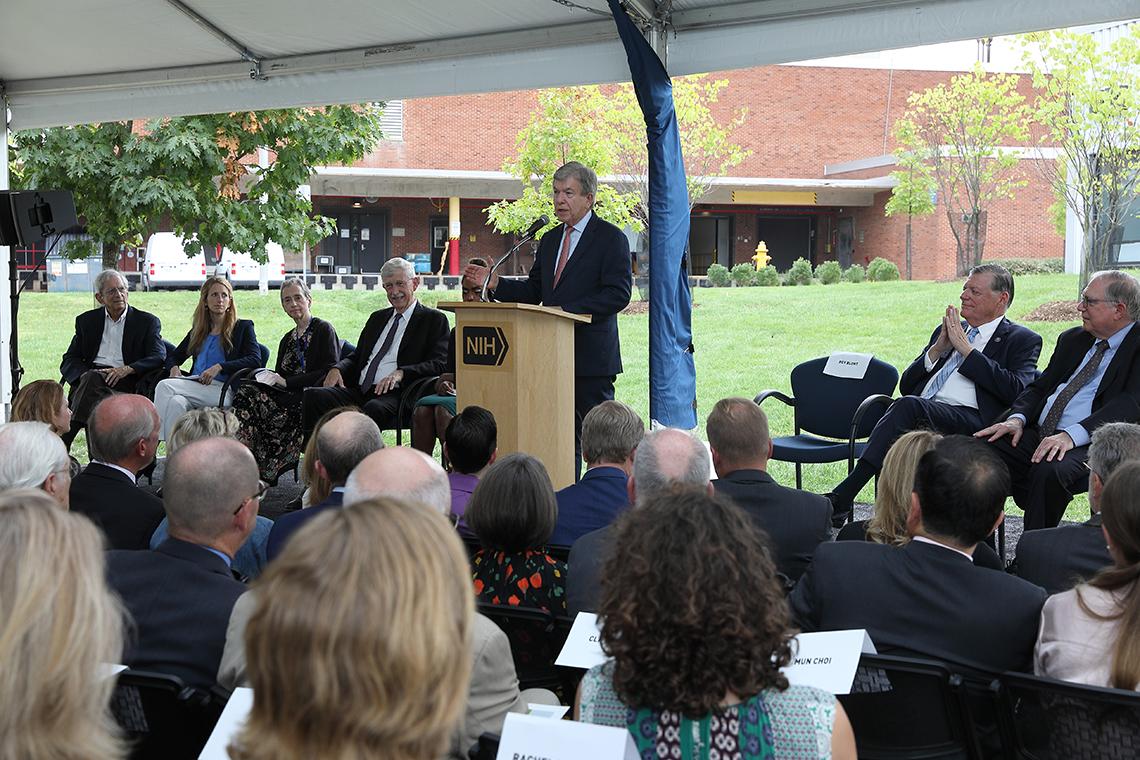
Photo: Chia-Chi Charlie Chang
“We saw there had been 12 flat years and we were cognizant of what that meant in terms of the signals we were sending out to young researchers and our position in the world,” said Cole. In the 7 years since, “NIH has gotten a substantial increase.”
When they first talked about increasing NIH’s budget, Cole asked Blunt if they should again double the budget like Porter had. Blunt replied, “no,” because “once you get to a goal, my experience is you quit doing the thing that got you there.”
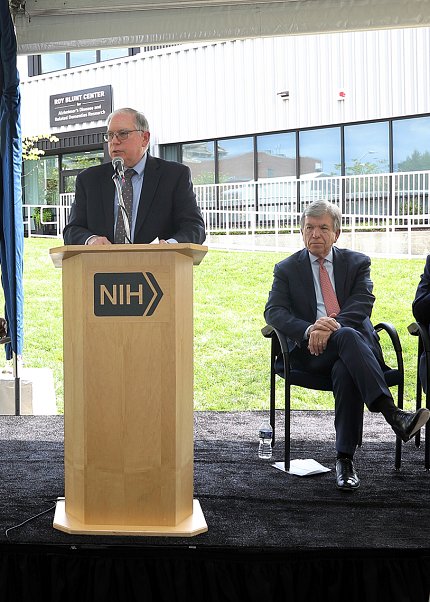
Photo: Chia-Chi Charlie Chang
Instead, Blunt opted for a different target: “inflation plus increase for NIH.” Every year, they worked with their colleagues across the aisle, Sen. Patty Murray (D-WA) and Rep. Rosa DeLauro (D-CT), to get it done.
“It didn’t matter who was president or which party controlled the House or Senate. The bill got across the line,” Cole said. “The most steadfast person in that has been Roy Blunt, who set the goals and standards.”
Cole lost his father to Alzheimer’s. Although the disease is personal for him, securing funding for Alzheimer’s research was a logical decision. Alzheimer’s is the most expensive disease. Trying to cure, manage or delay it is cheaper than dealing with it.
“The guy who spotted and focused on that is my friend and leader, Roy Blunt,” he concluded. “It’s been a wonderful journey and a great honor to be his partner, friend and follower in an endeavor this important.”
Closing the event, NIA director Dr. Richard Hodes said his institute is determined to find treatments that delay onset, slow disease progression or treat Alzheimer’s. NIA will continue “the tradition of intensity, commitment, inclusiveness and diversity, to the research that is needed to carry us to the finishing line.”
